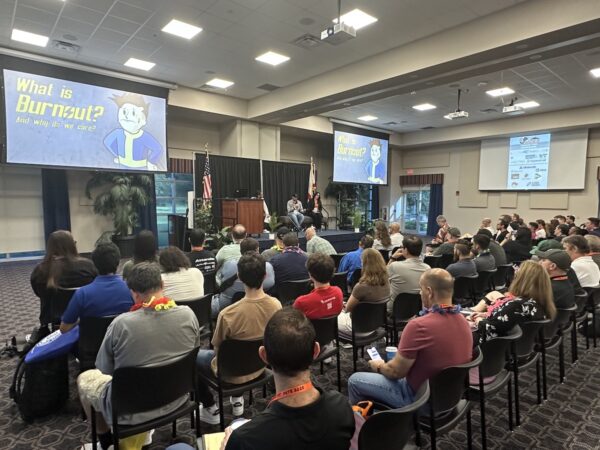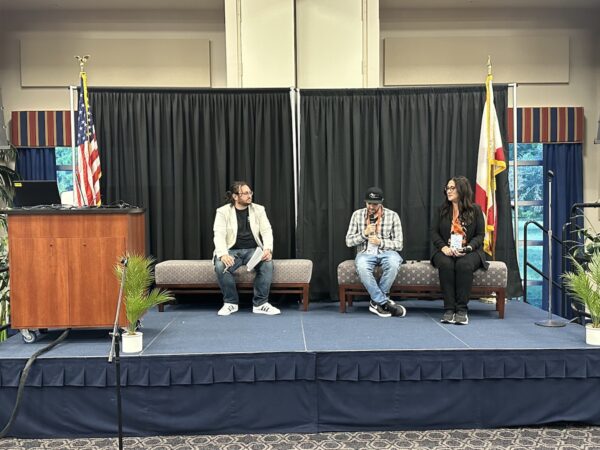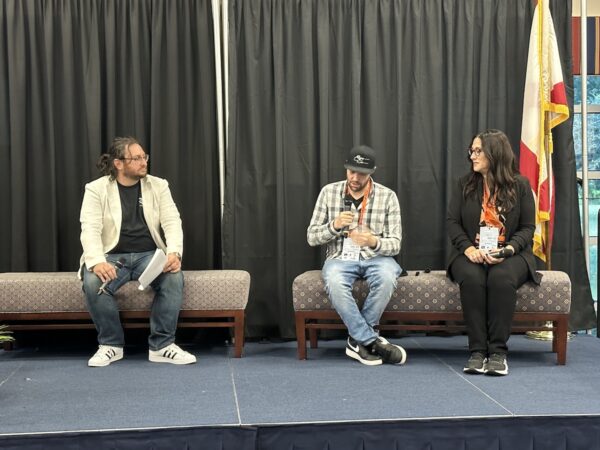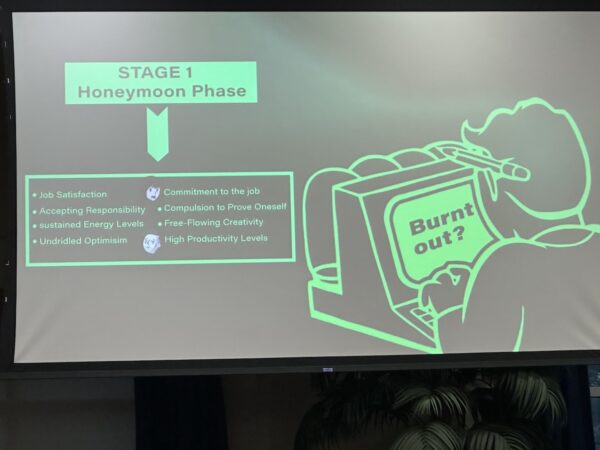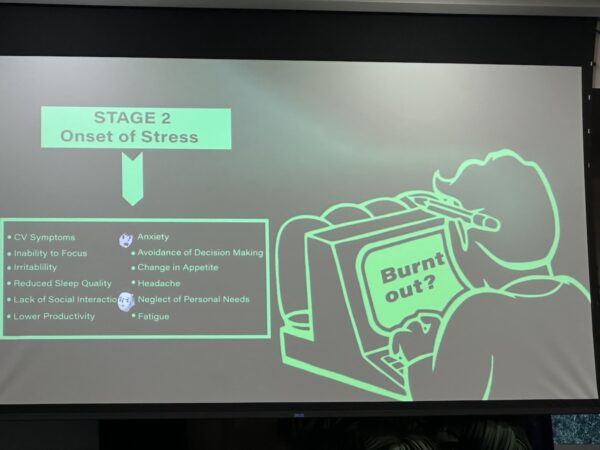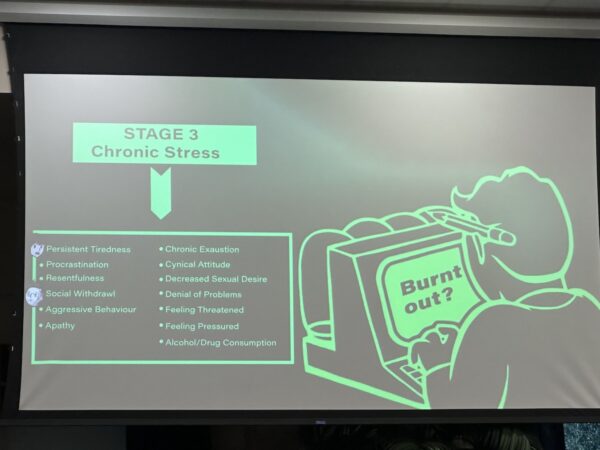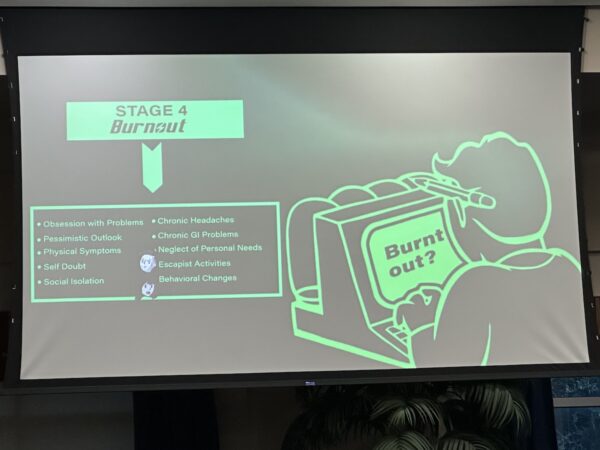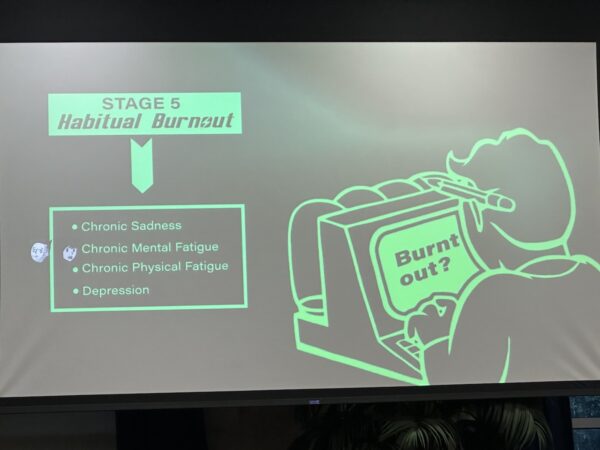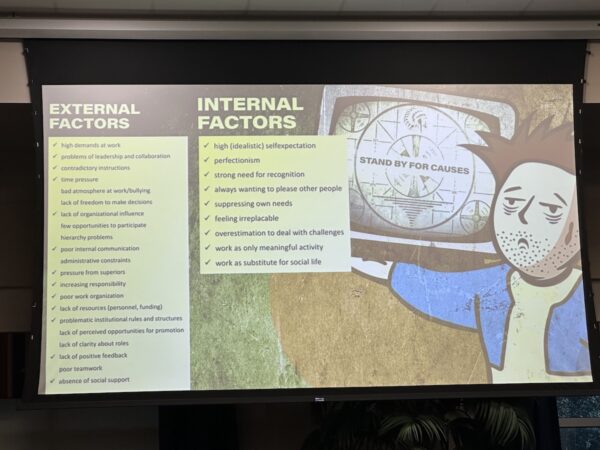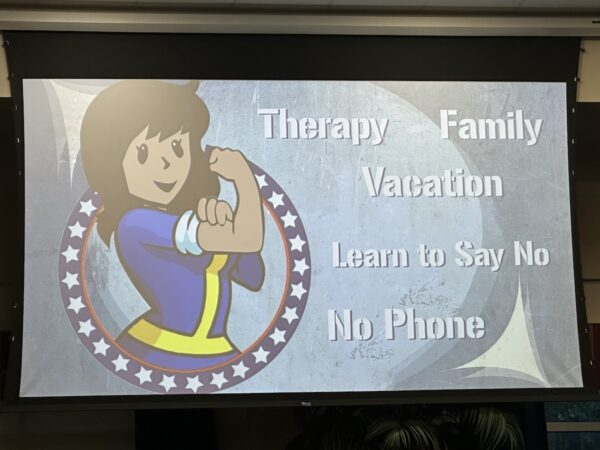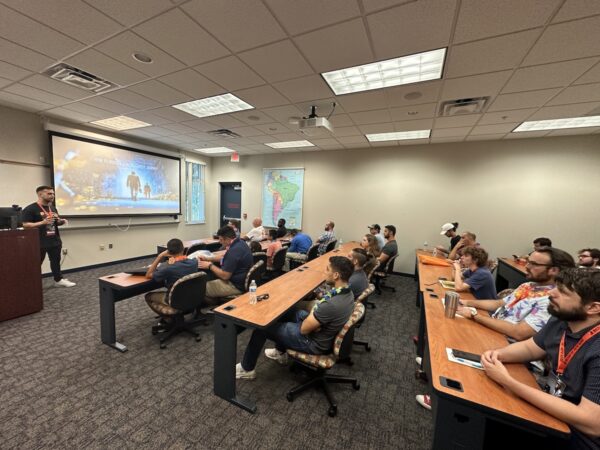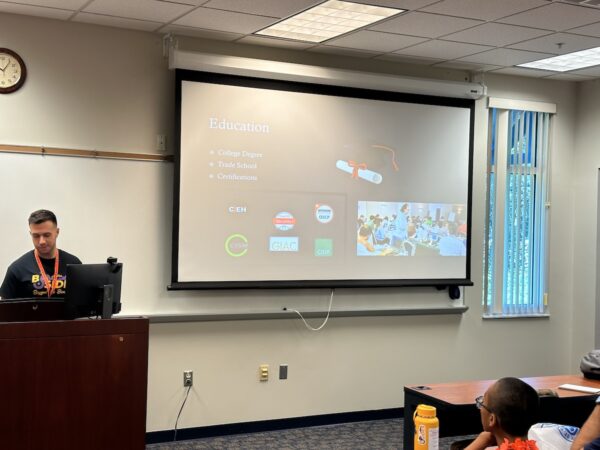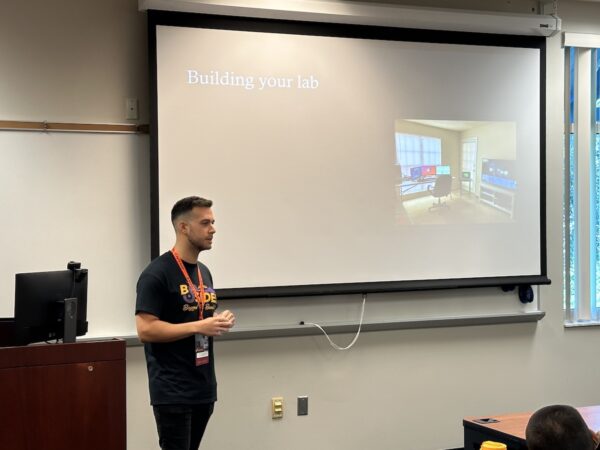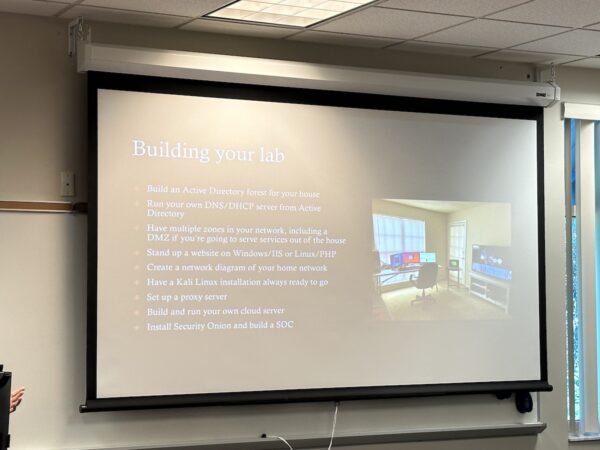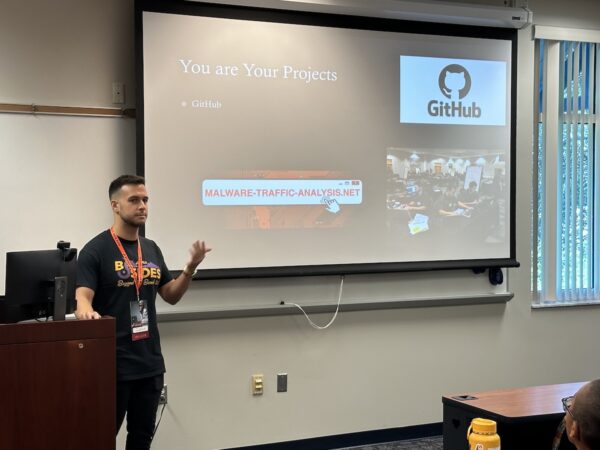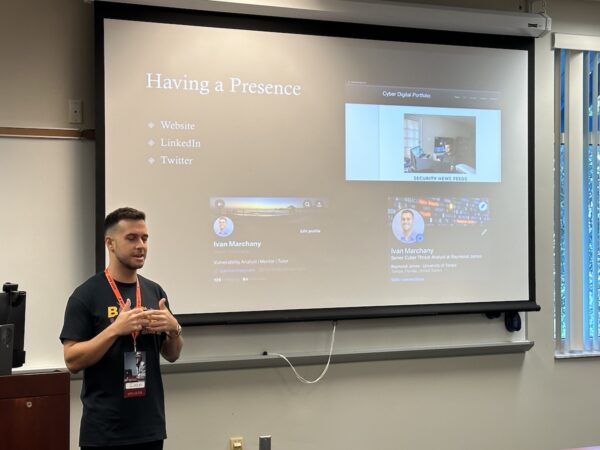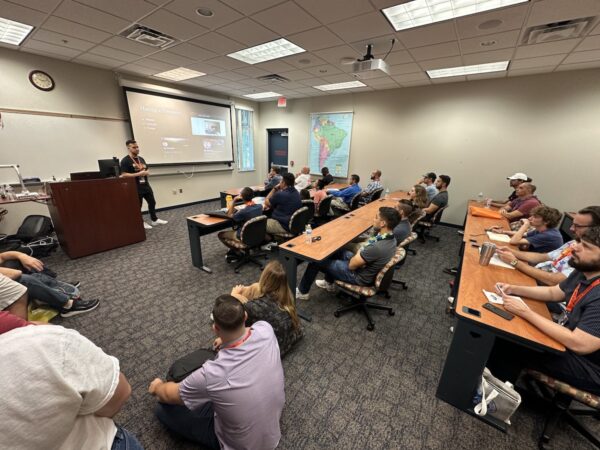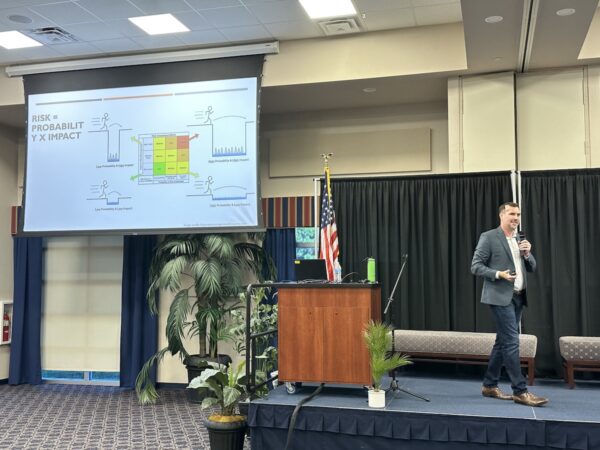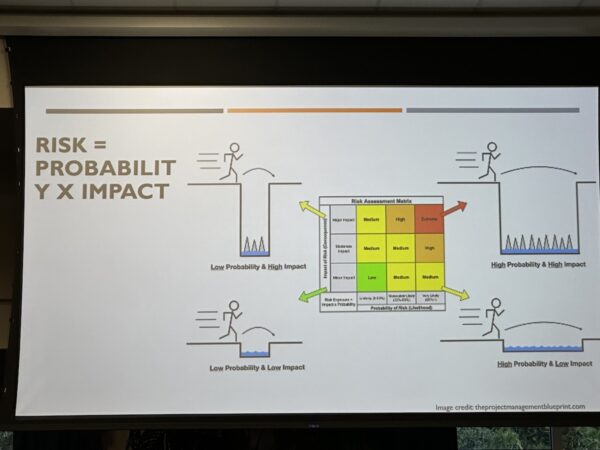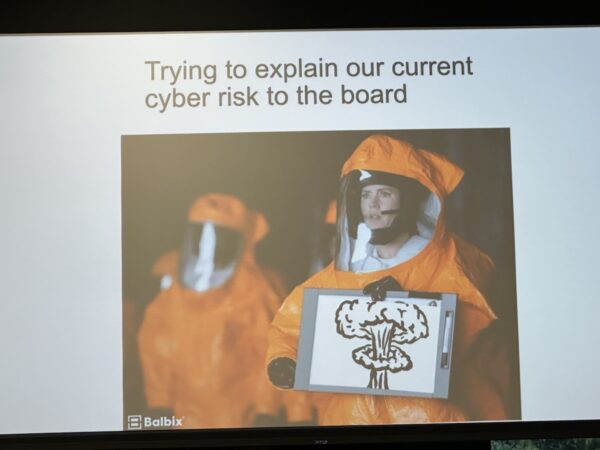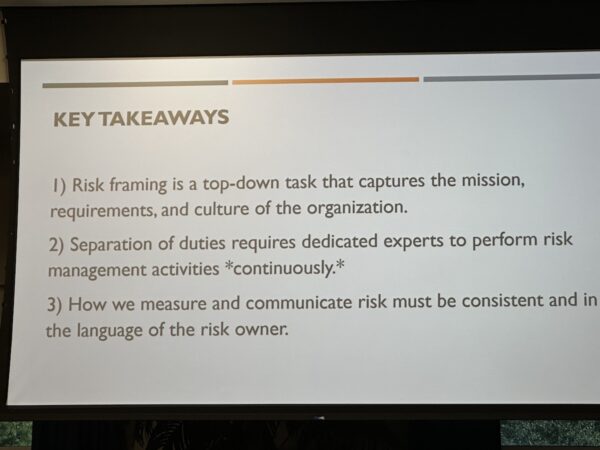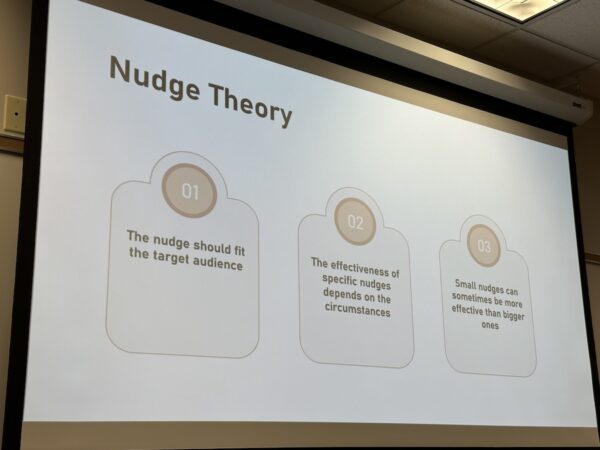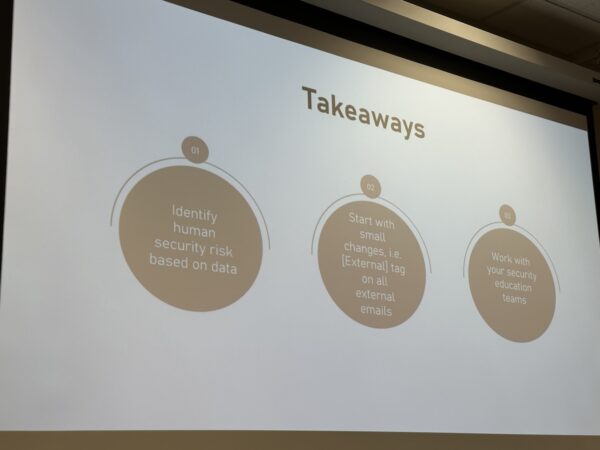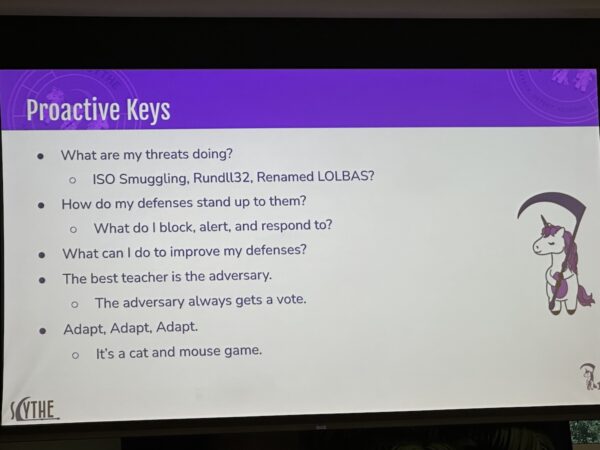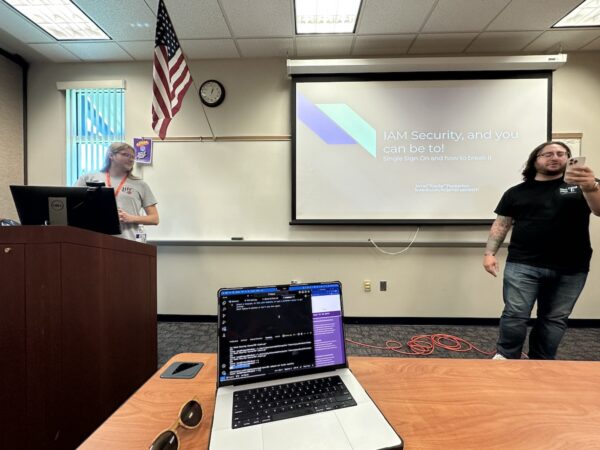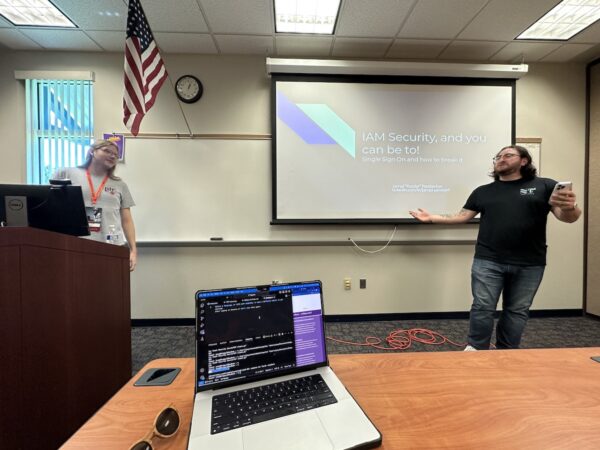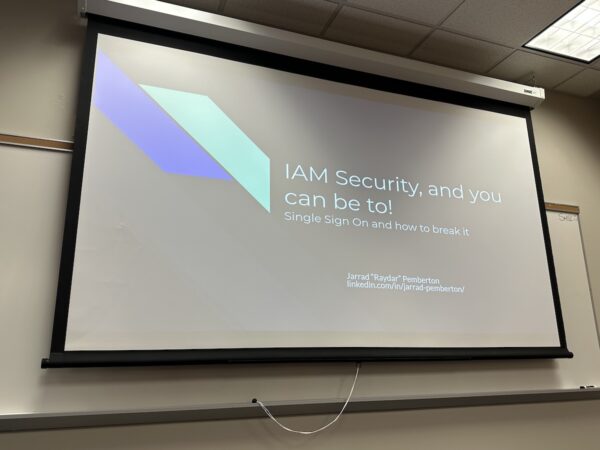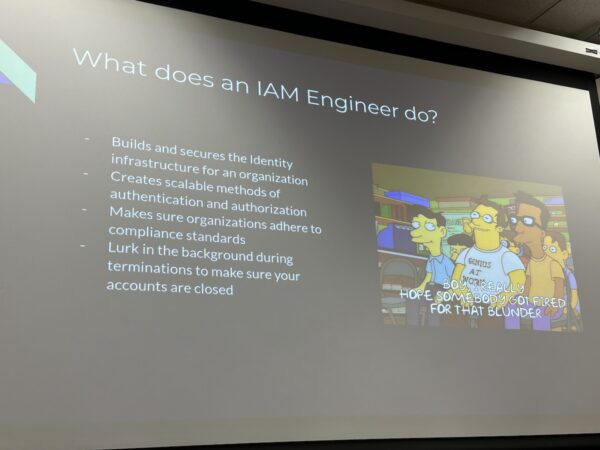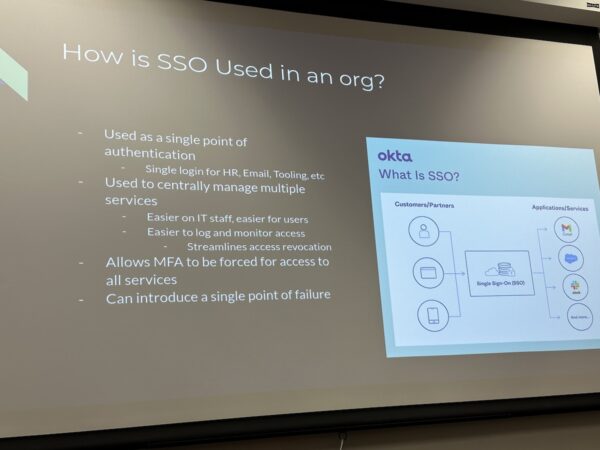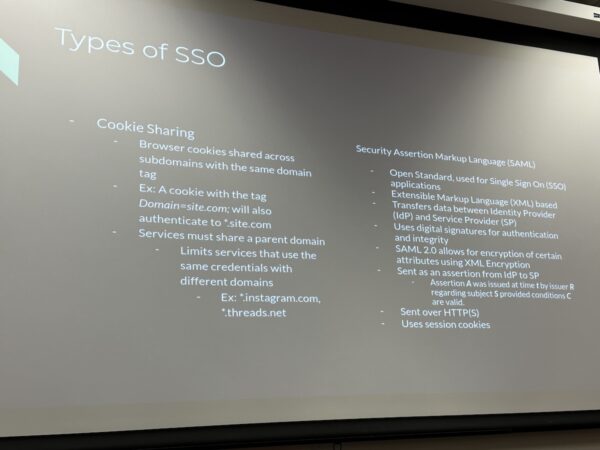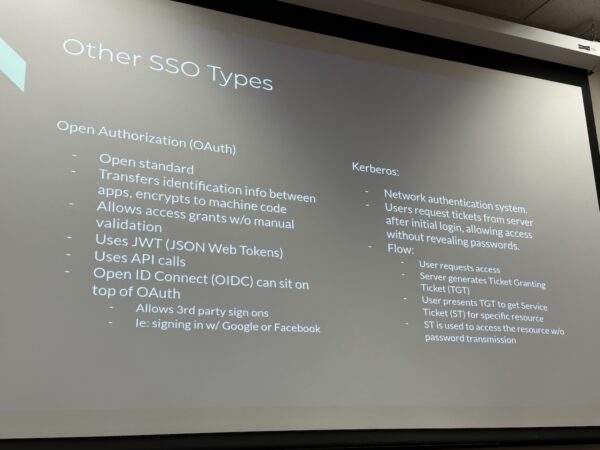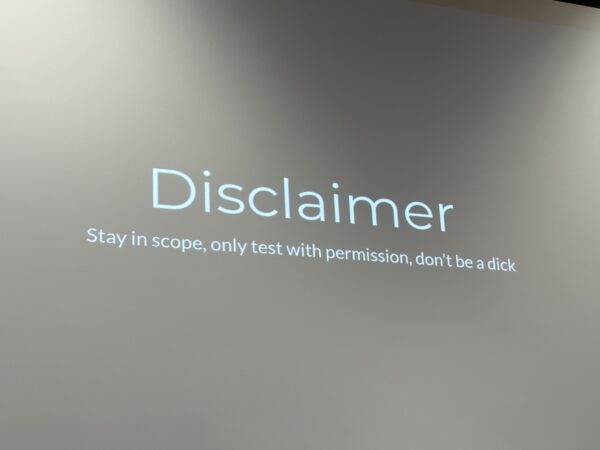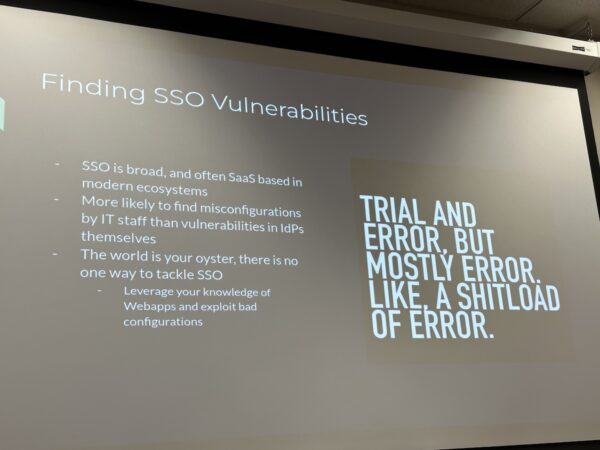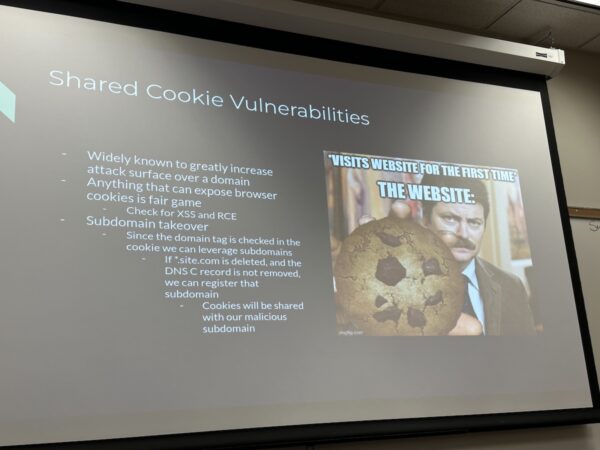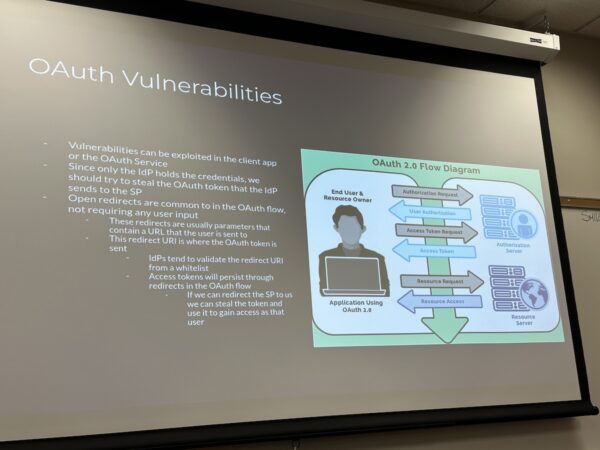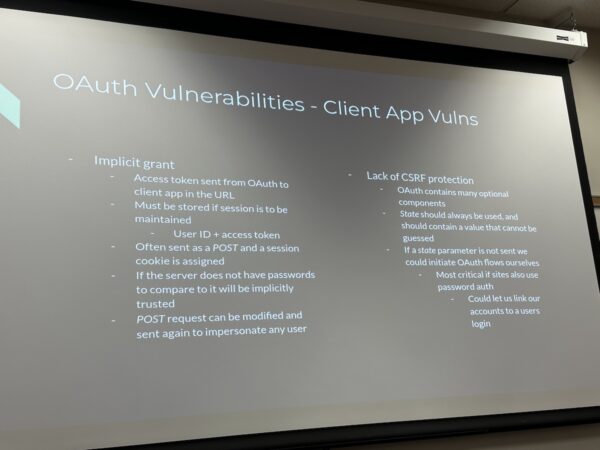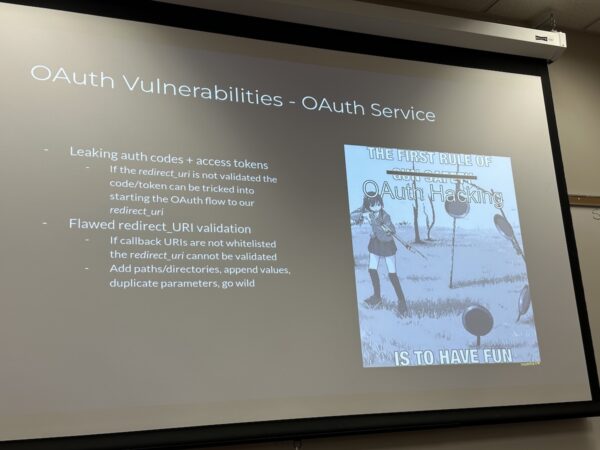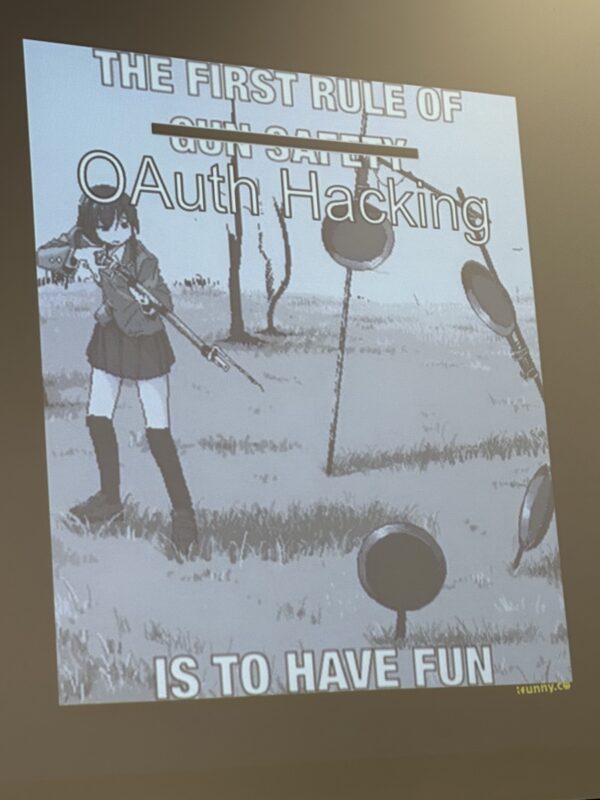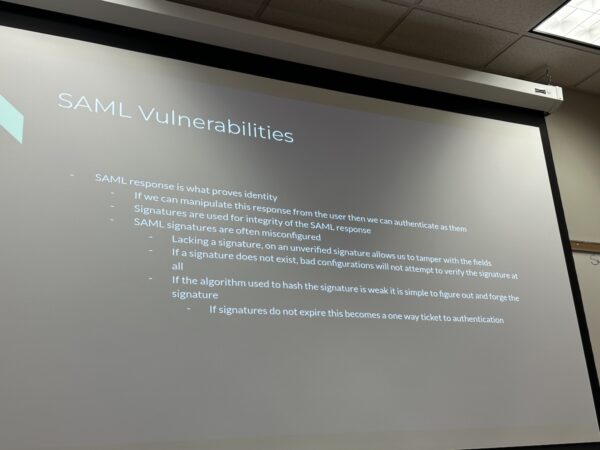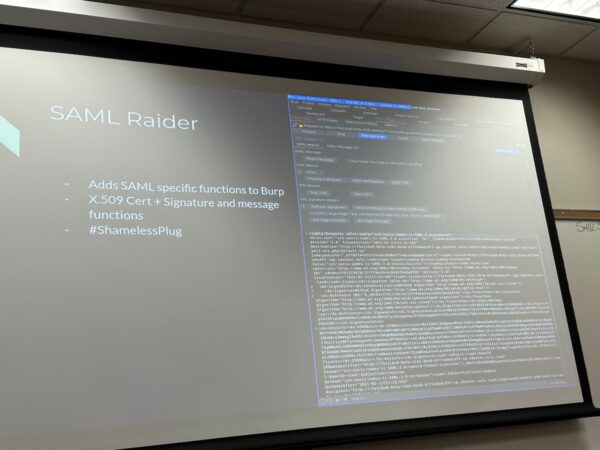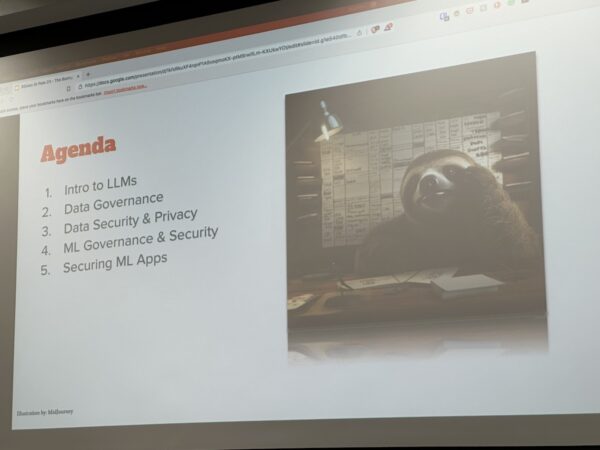I attended BSides St. Pete last Saturday, the second anniversary of this event, and it was nice to see that attendance had more than doubled. It’s nice to see the that the Tampa Bay cybersecurity community is active on both sides of “The Other Bay Area!”
BSides gets it name from “b-side,” the alternate side of a vinyl or cassette single, where the a-side has the primary content and the b-side is the bonus or additional content. In 2009, when the Black Hat conference in Las Vegas received way more presentation submissions than they could take on, the rejected presenters (who still had very could presentations; there just wasn’t enough capacity for them) banded together and made their own “b-side” conference that ran in parallel with Black Hat. From that event came BSides.

Since then, BSides conferences have been held over the world. As of September 2023, nearly 900 have been held, including BSides Tampa X — the 10th BSides Tampa conference — which took place in April. BSides St. Pete 2023 took place at St. Petersburg College’s Seminole Campus and had over 300 attendees.
Opening keynote: Between Two Palms: A Session on Burnout
The day started at 9 with the opening keynote, which took place not only on the main stage, but between two palm plants, as promised in its title:
The keynote was a frank discussion moderated by John “Cochise” Buzin (one of my instructors at the UC Baseline cybersecurity course I took in the summer of 2020) and featured Chris Machowski (also one of the people behind the UC Baseline course) and Elvira Reyes.
While they stated quite clearly that they aren’t psychology professionals, they are very active in the cybersecurity field, and each of them knows something about burnout from personal experience.
Over their talk, they talked about what they identified as the five stages of burnout, starting with stage one, the honeymoon phase:
This stage is marked by the following:
- Job satisfaction
- Accepting responsibility
- Sustained energy levels
- Unbridled optimism
- Commitment to the job
- Compulsion to prove oneself
- Free-flowing creativity
- High productivity levels
Stage two is the onset of stress:
In this stage, you’ll experience:
- CV symptoms
- Inability to focus
- Irritability
- Reduced sleep quality
- Lack of social interaction
- Lower productivity
- Anxiety
- Avoidance of decision-making
- Change in appetite
- Headache
- Neglect of personal needs
- Fatigue
Then comes stage three — chronic stress:
Symptoms of this stage include:
- Persistent tiredness
- Procrastination
- Resentfulness
- Social withdrawal
- Aggressive behavior
- Apathy
- Chronic exhaustion
- Cynical attitude
- Decreased sexual desire
- Denial of problems
- Feeling threatened
- Feeling pressured
- Alcohol/drug consumption
Next, stage 4, burnout:
Here’s what you’ll experience in this stage:
- Obsession with problems
- Pessimistic outlook
- Physical symptoms
- Self-doubt
- Social isolation
- Chronic headaches
- Chronic GI problems
- Neglect of personal needs
- Escapist activities
- Behavioral changes
And finally, stage 5 — habitual burnout:
And with this comes:
- Chronic sadness
- Chronic mental fatugue
- Chronic physical fatigue
- Depression
After this rather gloomy description of burnout’s stages came the things you can do to counter burnout:
They generally boil down to “take better care of yourself,” which is in agreement with what the Mayo Clinic says.
I thought their use of the iconography from the Fallout games for the topic of burnout was pretty clever.
Anonymous trooper
I passed by this fella on the way to the next session:
How to build a cybersecurity journey
I caught a bit of Ivan Marchany’s session, How to Build a Cybersecurity Journey, one of the presentations that covered how one gets into the business of cybersecurity.
Among other things, he covered building your own cybersecurity lab…
…and reminded the audience that as far as prospective employers and clients are concerned, you are your projects:
And equally important is the fact that if you don’t have some kind of online presence in this day and age, you effectively don’t exist to employers and clients:
This was a popular topic, and Ivan was playing to a standing-room-only audience:
Cyber risk management
I also caught the tail end of Dan Holland’s presentation, Complexity is the Enemy: How to start doing Cyber Risk Management. I’m pretty sure I arrived at one of the most important slides, the “risk as a product of probability and impact” slide:
I plan to share this slide on the Okta Slack’s “random” channel:
And here are the takeaways from Dan’s presentation:
A Urinal Story: Human Behavior & Security
Somehow, I managed to miss the “urinal story” part of Daniel Lopez’ and Ashwini Machlanski’s presentation on helping firm up the human element in cybersecurity. They covered key parts of managing people through the use of behavioral science and little tricks like “nudges” to get people to be more security-compliant.
This slide summarizes their key takeaways quite well:
Ashwini and Daniel handed out my favorite stickers from the conference:
My one tragic mistake

In wandering the halls and checking out what was happening in other rooms, I failed to catch Stacey Oneal’s Getting into Cybersecurity presentation, which was on my list. I owe her one — I promise I’ll catch you at your next presentation, Stacey!
Lunch
Lunch was provided by two local food trucks:
Super Grouper hadn’t opened by the time I got to the trucks, so I got an Elvis Burger from 1 Up. It’s been a while since I last had a peanut butter-and-bacon burger, and I enjoyed mine. I know it sounds weird, but it’s worth trying!
Lunch keynote: Becoming a Proactive Defender
While having lunch, I caught most of Christopher Peacock’s presentation, Becoming a Proactive Defender:
I’m going to steal his line, “The best teacher is the adversary; the adversary always gets a vote.”
IAM Security and So Can You: An Intro to Identity Access Management and How to Beat It to a Pulp
I’ve been told that there was a presenter at BSides Tampa that was a bit of dick and overdid it with his bad-mouthing Okta while I wasn’t in the room, so while this talk featured a different presenter, you’d better bet your ass that I was going to be at this one.
But Jarred “Raydar” Pemberton was a lot more reasonable than the other guy. He got an intro from Cochise, who not only mentored him, but convinced him that he should give this presentation. That was a good call; in matters of cybersecurity, if Cochise suggests you do something, it’s generally a good idea to do it.
“Does SSO scare red teamers?” Jarrad asked. “Yes,” he plied to his own question, saying that it’s the kind of thing he shied away from.
Jarrad told us about what he does for a living. It’s always fascinating to see how people who use the stuff we make work with it:
Take note of that last point: in addition to the HR staff or outside HR consultants like “The Bobs,” another person that might be at your termination meeting is someone whose job is to close your work accounts.

I’m actually on the Auth0 side of Okta, which provides a service for customer logins, versus the Okta side of Okta, which handles SSO (single sign-on) for the workforce. My experience with the Okta service is mostly as a user: I use it to log into systems at work:
Yup, that’s an Okta slide! Jarrad’s take on Okta:
- “One that I work a lot with and do like quite a bit”
- “Super easy to use”
- “Simple to get brought up to speed”
- “It’s what I would recommend to an org if they can afford it”
(Note to self: Send Jarrad some swag.)
SSO, in addition to letting a workforce since into various work systems with a single set of credentials, has other uses, including certain HR-related tasks:
- Monitoring access and, by virtue of knowing who’s logging into what, see who’s really coming into the office and who’s merely pretending to do so
- Easily hitting the “off” button for an employee when necessary
Jarrad then went into the different types of SSO, starting with cookie sharing. It’s typically used with internally-developed applications, such as home-grown HR and payroll applications at less mature organizations that haven’t graduated to SaaS application, and if those applications have a common parent domain (that is, if they live on an URL of the form *.your-domain-here.your-tld-here. He recommends against it, as it’s pretty much broken.
He then talked about SAML — Security Assertion Markup Language — an open-standard, XML-based framework for authentication and authorization between two entities without a password.
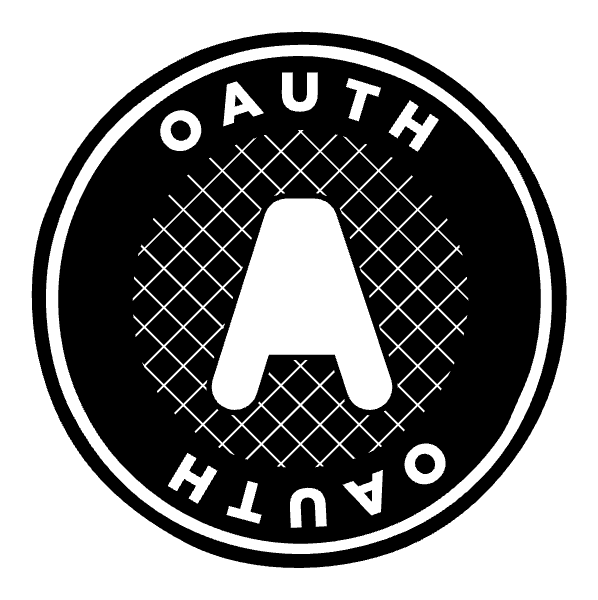
Most of his talk was focused on the standard that also happens to be my livelihood: OAuth or Open Authorization, the open standard for access delegation, which is often used to grant websites or applications access to user information without giving them their login credentials.
He also quickly mentioned Kerberos, which is for authenticating requests among trusted hosts on an untrusted network:
Here’s some good advice from all you pentesters. Be sure to follow them, especially that last one:
It’s not the early 2000s anymore; stop using shared cookies as SSO! All an attacker has to do is acquire a cookie, and they become a legitimate person in the organization, free to wreak havoc.
There’s a particular vulnerability that is an attacker’s dream, where the *.site.tld domain is deleted, but its C record in the DNS isn’t. An attacker could register that subdomain and gather cookies, and eventually, lots of organization data:
When it comes to OAuth, you’re looking for implementation vulnerabilities, in either the client application, or the OAuth service.
In the OAuth flow, only the IdP (identity provider) holds the user credentials, which are contained in the ID token. As an attacker, you want to somehow steal the ID token, which you can then use the request the access token, which is the key to the resources you want to get your paws on.
Because of its delegated nature, OAuth relies on open redirects. A poorly-built or -configured OAuth service that fails to use a list of allowed redirect URIs could be exploited, but that’s the sort of thing that Auth0 doesn’t allow.
As far as CSRF (cross-site request forgery) attacks are concerned, they can be mitigated with OAuth 2.0’s state parameter. For each authentication request, set it to a hard-to-guess value, and see if the response is the same as the one you sent with the request.
And of course, there’s always checking for bad implementations of the standard:
Here’s another meme I’m going to share on the Okta Slack:
And finally, there’s SAML. As the mobile specialist for Auth0, I never touch the stuff:
But if you’re doing pentesting on a SAML-based setup, you’ll want to use SAML Raider, which add SAML-specific functions to Burp Suite:
Last presentations of the day
I caught a bit of Dan Fernandez’ presentation, The Boring Parts of AI: Risks and Governance of Large Language Models — you can find the slides here…
…and a sliver of Cochise’s How to Wage War and Bypass Congress: a Primer on Gray Zone Warfare preso, because it’s always fun to see him go off on a rant.
Thank you, BSides St. Pete!
To Wilson Bautista and the BSides St. Pete team, my thanks for a great event for the cybersecurity community to share knowledge and gather together!
(And happy birthday, Wilson!)


